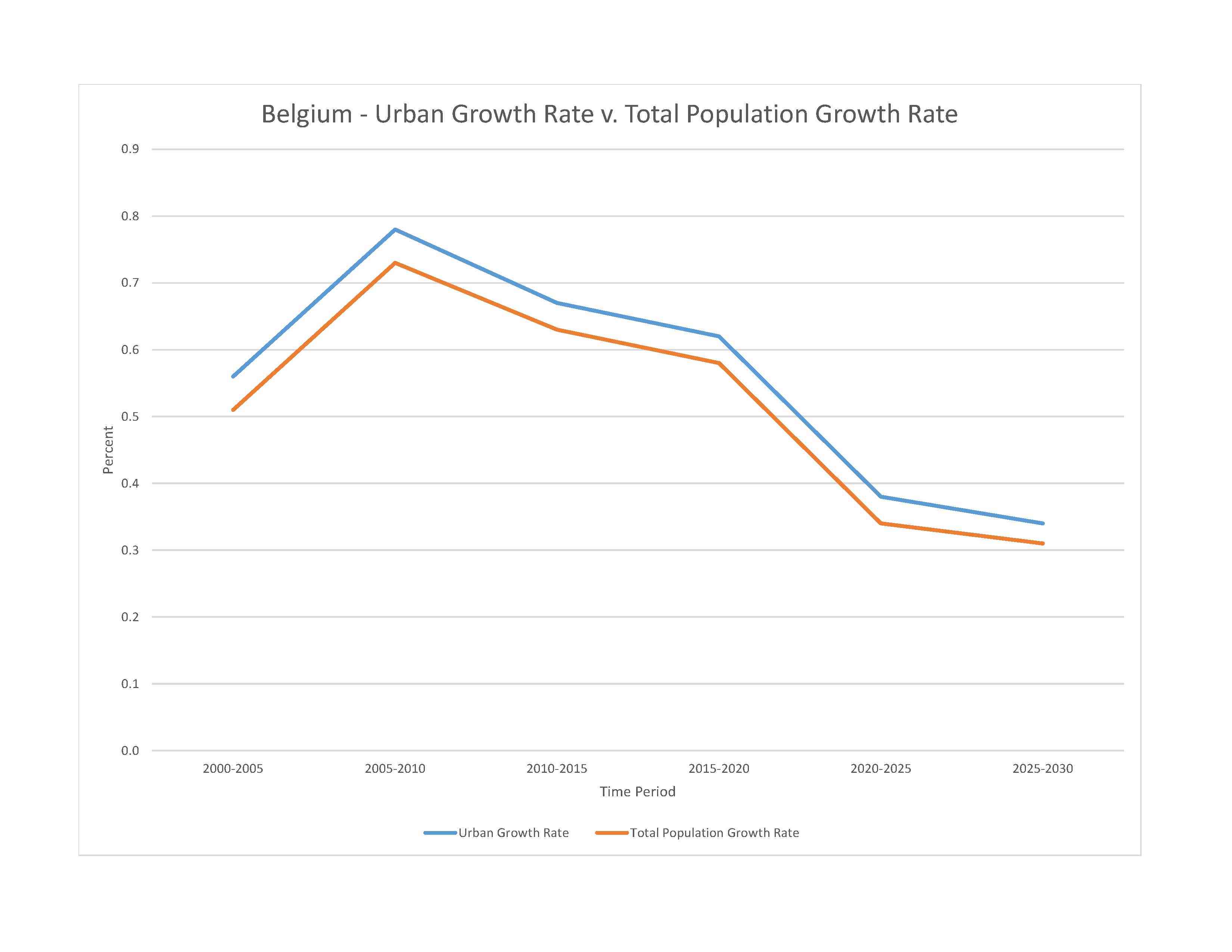
11,913,633 (2023 est.)
noun: Belgian(s)
adjective: Belgian
Belgian 75.2%, Italian 4.1%, Moroccan 3.7%, French 2.4%, Turkish 2%, Dutch 2%, other 10.6% (2012 est.)
Dutch (official) 60%, French (official) 40%, German (official) less than 1%
major-language sample(s):
Het Wereld Feitenboek, een onmisbare bron van informatie. (Dutch)
The World Factbook, une source indispensable d'informations de base. (French)
The World Factbook, the indispensable source for basic information.
French audio sample:
Dutch audio sample:
Roman Catholic 57.1%, Protestant 2.3%, other Christian, 2.8%, Muslim 6.8%, other 1.7%, atheist 9.1%, nonbeliever/agnostic 20.2% (2018 est.)
0-14 years: 17.03% (male 1,038,921/female 990,288)
15-64 years: 63.06% (male 3,788,406/female 3,724,202)
65 years and over: 19.91% (2023 est.) (male 1,049,402/female 1,322,414)
total dependency ratio: 56.5
youth dependency ratio: 26.1
elderly dependency ratio: 30.4
potential support ratio: 3.3 (2021 est.)
total: 41.9 years (2023 est.)
male: 40.7 years
female: 43 years
0.55% (2023 est.)
10.9 births/1,000 population (2023 est.)
9.6 deaths/1,000 population (2023 est.)
4.2 migrant(s)/1,000 population (2023 est.)
most of the population concentrated in the northern two-thirds of the country; the southeast is more thinly populated; considered to have one of the highest population densities in the world; approximately 97% live in urban areas
urban population: 98.2% of total population (2023)
rate of urbanization: 0.38% annual rate of change (2020-25 est.)

2.122 million BRUSSELS (capital), 1.057 million Antwerp (2023)
at birth: 1.05 male(s)/female
0-14 years: 1.05 male(s)/female
15-64 years: 1.02 male(s)/female
65 years and over: 0.79 male(s)/female
total population: 0.97 male(s)/female (2023 est.)
29.2 years (2020 est.)
5 deaths/100,000 live births (2020 est.)
total: 3.2 deaths/1,000 live births (2023 est.)
male: 3.6 deaths/1,000 live births
female: 2.7 deaths/1,000 live births
total population: 82.1 years (2023 est.)
male: 79.5 years
female: 84.8 years
1.77 children born/woman (2023 est.)
0.86 (2023 est.)
66.7% (2018)
improved: urban: 100% of population
rural: 100% of population
total: 100% of population
unimproved: urban: 0% of population
rural: 0% of population
total: 0% of population (2020 est.)
11.1% of GDP (2020)
6.08 physicians/1,000 population (2020)
5.6 beds/1,000 population (2019)
improved: urban: 100% of population
rural: 100% of population
total: 100% of population
unimproved: urban: 0% of population
rural: 0% of population
total: 0% of population (2020 est.)
22.1% (2016)
total: 9.15 liters of pure alcohol (2019 est.)
beer: 4.35 liters of pure alcohol (2019 est.)
wine: 3.41 liters of pure alcohol (2019 est.)
spirits: 1.09 liters of pure alcohol (2019 est.)
other alcohols: 0.3 liters of pure alcohol (2019 est.)
total: 23.4% (2020 est.)
male: 25.8% (2020 est.)
female: 21% (2020 est.)
1% (2014/15)
43.2% (2023 est.)
6.7% of GDP (2020 est.)
total population: NA
male: NA
female: NA
total: 19 years
male: 18 years
female: 20 years (2020)
NOTE: The information regarding Belgium on this page is re-published from the 2024 World Fact Book of the United States Central Intelligence Agency and other sources. No claims are made regarding the accuracy of Belgium 2024 information contained here. All suggestions for corrections of any errors about Belgium 2024 should be addressed to the CIA or the source cited on each page.
This page was last modified 04 May 24, Copyright © 2024 ITA all rights reserved.